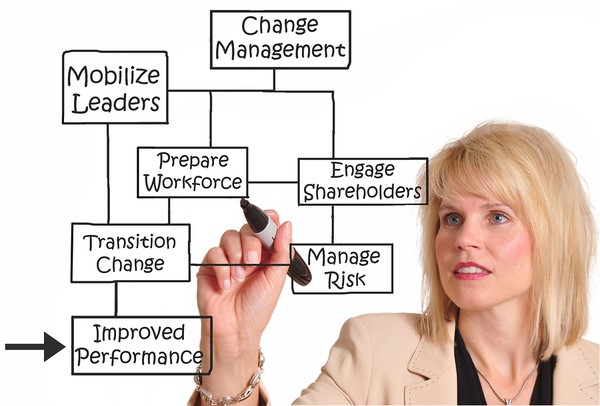How To Effectively Lead And Manage Change
Contents
Define the Change
Clearly defining the change that is to be implemented is crucial for its success. This includes identifying the problem or opportunity that the change aims to address, as well as the specific goals that the change hopes to achieve while managing change. Communicating this information to all stakeholders, including students, faculty, and staff, is important for gaining buy-in and support for the change. It is also important to consider how the change will impact each group and how they can be involved in the process. In this content you will learn how to effectively lead and manage change by showing your leadership skills.
Create a Vision To Manage Change
Developing a vision for the change is crucial for inspiring and motivating stakeholders. The vision should be ambitious and align with the overall goals of the change. It should be able to be described in a clear and compelling way, making it easy for stakeholders to understand and relate to. The vision should also be flexible and adaptable to changing circumstances.
Creating a shared vision is important for ensuring that everyone is working towards the same goal. This means involving stakeholders in the process of creating the vision, and working together to create a shared understanding of the change. This can be done through workshops, focus groups, or other forms of engagement. It is important to get input and feedback from a diverse group of stakeholders, such as students, faculty, and staff.

Build a Strong Team
Assembling a team of individuals with the necessary skills and knowledge to lead and manage the change is essential for its success. This team should include individuals from different areas of the organization and should have a mix of skills and experience. It’s important to involve people who have different perspectives and can bring new ideas to the table. This diverse team should include individuals who have experience in change management, project management, and leadership. It’s also important to consider the interpersonal dynamics of the team and to make sure that everyone can work well together.
When building the team, it’s important to identify the roles and responsibilities of each team member. This includes determining who will be responsible for leading the team, managing the budget, and communicating with stakeholders. It’s also important to consider the skill sets of each team member, and to ensure that each person is in a role that best utilizes their strengths.
Develop a Plan For Changing
Creating a detailed plan that outlines the steps that will be taken to implement the change is important for ensuring that the change is executed successfully. This plan should be developed with input from the team and stakeholders, and should take into account the specific goals and objectives of the change. It’s important to consider how the change will be implemented, including the resources required, the timeline for implementation, and the expected outcomes.
The plan should include specific milestones and deadlines that the team can work towards. This can be used to track progress and to make sure that the change is on track. It’s important to establish metrics for success, so that progress can be measured and evaluated.
It’s also important to include contingencies for potential obstacles that may arise during the time you manage change. This means identifying potential risks and developing strategies to mitigate them. This will help the team to be prepared for any unexpected issues that may arise and to make adjustments as necessary.

Communicate Effectively
Effective communication is crucial in any change process. It’s important to keep all stakeholders informed about the change, including providing regular updates on progress, addressing concerns, and soliciting feedback. This can be done through a variety of channels, such as email, meetings, and workshops. Additionally, it’s important to actively listen to and address any concerns or feedback that stakeholders may have when you try to manage change.
It’s important to have a communication plan in place. This plan should include the specific message that needs to be communicated, the target audience, and the communication channels that will be used. It’s also important to consider the timing of the communication, and to make sure that the message is delivered at the right time.
Embrace Technology
In today’s digital age, technology can play a key role in supporting the change. Digital badges, for example, can be used to recognize and reward leadership skills and achievements, and to promote ongoing professional development. This can also be used to help with the tracking of progress and to facilitate communication. Additionally, technology can be used to automate processes and to create more efficient systems and procedures.

Lead by Example
Leading by example is crucial for manage change effectively. This means demonstrating the behavior and skills that are necessary for the change to be successful. This includes things like being adaptable, remaining calm under pressure, and effectively communicating with stakeholders. Additionally, it is important to show your commitment to the change by being involved in the process and by being a role model for others.
In summary, effectively leading and managing change in business education requires a clear definition of the change and its goals, a compelling vision, a strong team, a detailed plan, effective communication, embracing technology, and leading by example. The use of digital badges can be particularly effective in recognizing and rewarding leadership skills and achievements, promoting ongoing professional development and tracking progress. Strong leadership is key in ensuring that the change is executed successfully and that stakeholders are engaged and motivated throughout the process.



